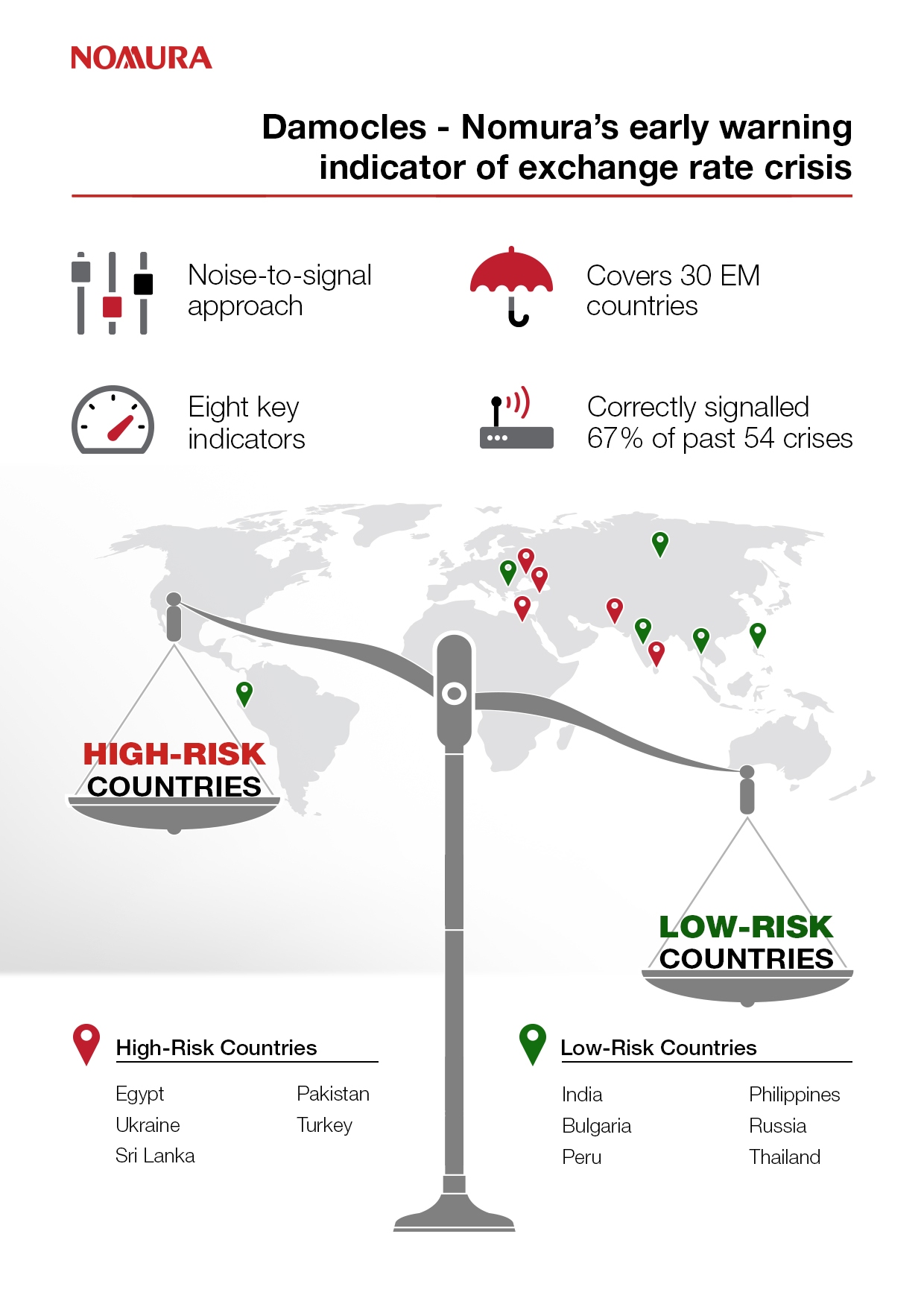Damocles is based on a noise-to-signals approach in which we use eight key indicators to predict currency crises in 30 emerging market (EM) countries; this approach has correctly predicted 67% of the 54 crises since 1996. These eight indicators, using the timeliest data, send a warning signal that a currency crisis could occur when they breach prescribed threshold levels. The signal information is then weighted into a single summary measure: the Damocles score. A score above 100 suggests a country is vulnerable to a currency crisis within the next 12 months.
In this update, using fresh data up to March 2020, the results show six countries have scores at or above our crisis threshold of 100 – Egypt, Ukraine, Sri Lanka, Pakistan, Turkey and Czech Republic. Some of these countries have recently had large currency devaluations (Pakistan and Turkey) or are currently under IMF lending programs (Pakistan and Sri Lanka), but Damocles is signaling that they are not out of the woods, given their still-weak economic fundamentals, including high inflation that over time erodes export competitiveness. Egypt and the Czech Republic are new additions to the high risk list since our previous update in July 2019, while the scores for Romania, Kazakhstan and Indonesia have risen close to the 100 threshold.
At the other end of the spectrum, there are six countries with scores of zero: India, Bulgaria, Peru, The Philippines, Russia and Thailand. These signal very low risk of a currency crash and highlighting the high differentiation in EM.
It is uncommon for economic fundamentals of a country to change quickly, and so Damocles scores tend to move slowly. That said, there have been some notable changes in individual country Damocles scores from July 2019 and this latest update.
For a breakdown of each country’s Damocles score, read here.






